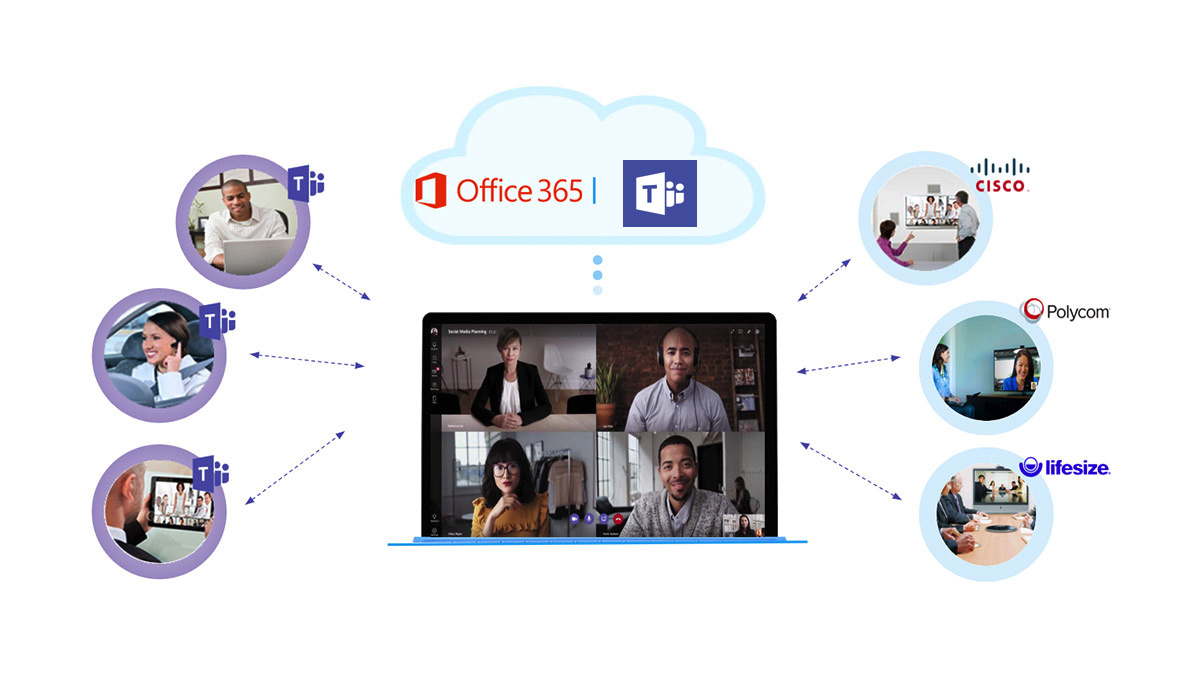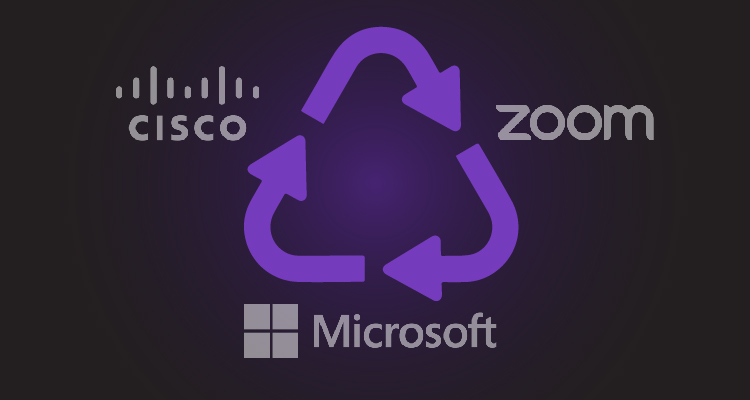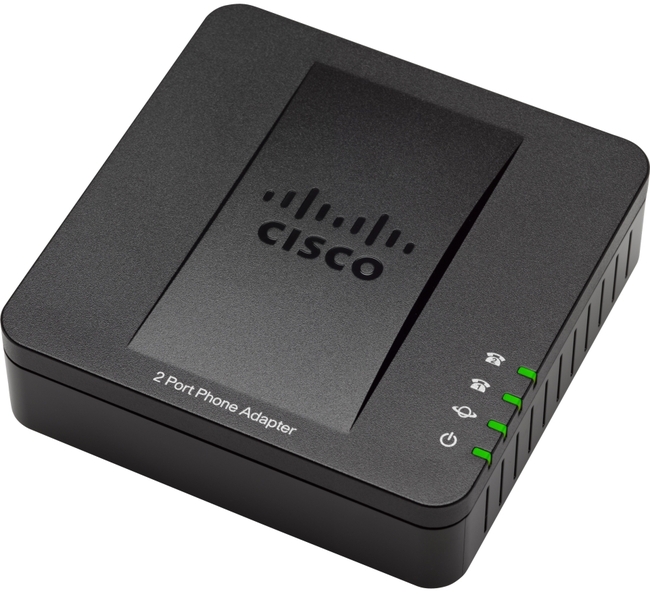Microsoft partners with selected Session Border Controllers (SBC) vendors to certify that their SBCs work with Direct Routing.
Microsoft works with each vendor to:
Microsoft Teams Microsoft partners with selected Session Border Controllers (SBC) vendors to certify that their SBCs work with Direct Routing. Microsoft works with each vendor to: Jointly work on the SIP interconnection protocols. The integration with MS Teams via the interop connector or WebRTC is on the roadmap and not released yet. However, you can try creating a weblink on the board to teams.microsoft.com. You can get some basic functionality, but not a full integration just yet.
Jointly work on the SIP interconnection protocols.
Perform intense tests using a third-party lab. Only devices that pass the tests are certified.
Run daily tests with all certified devices in production and pre-production environments. Validating the devices in pre-production environments guarantees that new versions of Direct Routing code in the cloud will work with certified SBCs.
Establish a joint support process with the SBC vendors.
Note
Microsoft only supports Phone System if a certified device or devices are connected through Direct Routing. Microsoft reserves the right to reject support cases where a non-certified device is connected to the Phone System through Direct Routing. If Microsoft determines that a customer’s Direct Routing issue is with a vendor’s SBC device, the customer will need to engage the SBC vendor for support.
The Microsoft Teams integration section has a new scenario: Cloud Video Interop (CVI) and WebRTC. Overview Microsoft Teams. Users demand interoperability with calendaring, ECM, workflow, telephony, meetings, video, devices, and more. Cisco meets this demand with client-based integration with Microsoft Teams. The simple-to-deploy client/plug-in. Once installed, here’s how you can join a Microsoft Teams meeting from Cisco devices: Using the Cisco DX80 with Microsoft Teams. To use Microsoft Teams on Cisco room kit like the DX80, follow these instructions: Dial the SIP address provided in the Join with a video conferencing device section of the Teams.
The table below lists devices certified for Direct Routing. (For information about which SBC vendors support Local Media Optimization, see Configure Local Media Optimization for Direct Routing.)
Learn more about Direct Routing.If you have any questions about the SBC certification program for Direct Routing, please contact drsbccertification@microsoft.com.
| Vendor | Product | Non-media bypass | Media bypass | Software version | Validated with E911 providers | ELIN capable |
|---|---|---|---|---|---|---|
| AudioCodes | Mediant 500 SBC | ✔ | ✔ | Supported 7.20A.250 (Recommended 7.20A.258) | ✔ | |
| Mediant 800 SBC | ✔ | ✔ | Supported 7.20A.250 (Recommended 7.20A.258) | ✔ | ||
| Mediant 2600 SBC | ✔ | ✔ | Supported 7.20A.250 (Recommended 7.20A.258) | ✔ | ||
| Mediant 4000 SBC | ✔ | ✔ | Supported 7.20A.250 (Recommended 7.20A.258) | ✔ | ||
| Mediant 1000B SBC | ✔ | Pending | Supported 7.20A.250 (Recommended 7.20A.258) | ✔ | ||
| Mediant 9000 SBC | ✔ | ✔ | Supported 7.20A.250 (Recommended 7.20A.258) | ✔ | ||
| Virtual Edition SBC | ✔ | ✔ | Supported 7.20A.250 (Recommended 7.20A.258) | ✔ | ||
| Ribbon Communications | SBC 5100/5110 | ✔ | ✔ | Supported 8.2 and 7.2 (Recommended 9.2) | ||
| SBC 5200/5210 | ✔ | ✔ | Supported 8.2 and 7.2 (Recommended 9.2) | |||
| SBC 5400 | ✔ | ✔ | Supported 8.2 and 7.2 (Recommended 9.2) | |||
| SBC 7000 | ✔ | ✔ | Supported 8.2 and 7.2 (Recommended 9.2) | |||
| SBC SWe | ✔ | ✔ | Supported 8.2 and 7.2 (Recommended 9.2) | |||
| SBC 1000 | ✔ | ✔ | 8.x or 9.x | ✔ | ||
| SBC 2000 | ✔ | ✔ | 8.x or 9.x | ✔ | ||
| SBC SWe Lite | ✔ | ✔ | 8.x or 9.x | ✔ | ||
| EdgeMarc Series | ✔ | 15.6.1 | ||||
| Thinktel | Think 365 SBC | ✔ | 1.4 | |||
| Oracle | AP 1100 | ✔ | ✔ | 8.3.0.0.1 | ✔ | |
| AP 3900 | ✔ | ✔ | 8.3.0.0.1 | ✔ | ||
| AP 4600 | ✔ | ✔ | 8.3.0.0.1 | ✔ | ||
| AP 6300 | ✔ | ✔ | 8.3.0.0.1 | ✔ | ||
| AP 6350 | ✔ | ✔ | 8.3.0.0.1 | ✔ | ||
| VME | ✔ | ✔ | 8.3.0.0.1 | ✔ | ||
| TE-SYSTEMS | anynode | ✔ | ✔ | Supported 3.20 (Recommended 4.0) | ✔ | |
| Metaswitch | Perimeta SBC | ✔ | 4.7 | |||
| Cisco | Cisco Unified Border Element (CUBE) for 1000 Series Integrated Services Routers | ✔ | ✔ | Supported IOS XE Amsterdam 17.2.1r (Recommended 17.3.2) | ||
| Cisco Unified Border Element (CUBE) for 4000 Series Integrated Services Routers | ✔ | ✔ | Supported IOS XE Amsterdam 17.2.1r (Recommended 17.3.2) | |||
| Cisco Unified Border Element (CUBE) for 1000V Series Cloud Services Router | ✔ | ✔ | Supported IOS XE Amsterdam 17.2.1r (Recommended 17.3.2) | |||
| Cisco Unified Border Element (CUBE) for 1000 Series Aggregation Services Routers | ✔ | ✔ | Supported IOS XE Amsterdam 17.2.1r (Recommended 17.3.2) | |||
| Cisco Unified Border Element (CUBE) for Catalyst 8000 Edge Platforms | ✔ | ✔ | IOS XE Amsterdam 17.3.2 | |||
| Avaya | Avaya Session Border Controller for Enterprise ( ASBCE) | ✔ | ✔ | Release 8.1.1 (8.1.2 for Media Bypass) | ||
| Nokia | Nokia Session Border Controller | ✔ | 19.5 (1908) | |||
| Nokia Session Border Controller | ✔ | 20.8 | ||||
| Italtel | NetMatch-S CI | ✔ | Supported 5.0 (Recommended 5.1) | |||
| Ericsson | vSBC 2.16 | ✔ | ||||
| Cataleya | Orchid Link | ✔ | 3.1 | |||
| ULTATEL | Teams SBC | ✔ | ✔ | 1.6 | ||
| Atos | Atos Unify OpenScape Session Border Controller | ✔ | V10R1.2 | |||
| Sansay Inc. | vmVSXi | ✔ | ✔ | 10.5.1.354-vm-S-x64 | ||
| Enghouse Networks | Dialogic BorderNet SBC | ✔ | ✔ | 3.9.0-786 | ||
| Patton Electronics Co. | Patton SmartNode eSBC | ✔ | 3.19.x |
The following table lists devices that are verified for interoperability between Direct Routing and Analog Devices.
| Vendor | Product | Verified |
|---|---|---|
| AudioCodes | ATA-1 | ✔ |
| AudioCodes | ATA-2 | ✔ |
| Ribbon | SBC 1000. Software version: 8.1.1 (build 527) | ✔ |
| Ribbon | SBC 2000. Software version: 8.1.1 (build 527) | ✔ |
| Oracle | AP1100 Software Version 8.3.0.1.2 | ✔ |
| Oracle | AP3900 Software Version 8.3.0.1.2 | ✔ |
| Oracle | AP4600 Software Version 8.3.0.1.2 | ✔ |
| Oracle | AP6300 Software Version 8.3.0.1.2 | ✔ |
| Oracle | AP6350 Software Version 8.3.0.1.2 | ✔ |
| Oracle | VME Software Version 8.3.0.1.2 | ✔ |
| TE-SYSTEMS | anynode with Grandstream GXW42xx (V1.0.7.10) | ✔ |
| Cisco | ATA 191 Multiplatform Analog Telephone Adapter | ✔ |
To give us product feedback about Teams, such as ideas for new features, see Uservoice.
Note
Microsoft will be moving from UserVoice to our own customer feedback solution on a product-by-product basis during 2021. Learn more.
Note the certification granted to a major version. That means that firmware with any number in the SBC firmware following the major version is supported.
Collaboration, efficiency, and transparency are essential to the modern workplace experience. And since working from home has become the new normal in today’s business landscape, technology is bridging the gap to ensure employees stay more connected and engaged than ever.
Thankfully, there are plenty of collaboration platforms to choose from, whether you’re focused on communication or project management. However, the ones that have stood the test of time come from two of the world’s top tech heavyweights—Cisco and Microsoft.
From large feature sets to tiered pricing plans, each tool has something to bring to the table. In this article, we will explore how both platforms compare based on key features, what the future of these tools holds in store, and how to select the right one for your business.
Get ready for the ultimate showdown of Microsoft Teams vs. Cisco Webex.
Microsoft Teams vs. Cisco Webex Teams Features and Capabilities
When searching for a new digital workspace solution, you want it to be robust and feature-rich. The more benefits you can derive from a single application, the better. Let’s take a look at some of the basic features that Cisco Webex and Microsoft Teams offer.
Microsoft Teams
Group Conversation: In Microsoft Teams, users can organize chats according to groups of people or topics. These conversations live in the application and are not automatically deleted once you log out. You can access your history from the previous day, week, or month, plus images, files, links, emojis, and GIFs will be retained as well.
Meetings: The consensus regarding Microsoft’s meetings is that they’re simple and intuitive. You can either instantly launch meetings or schedule them out for a later time. Microsoft Teams also lets you customize your backgroundand add live captions during meetings.
File-Sharing: Microsoft Teams allows you to share, save, and organize files your way. Users can even work collaboratively on Word documents or PowerPoint presentations right from inside the application. What’s more, you can share files in several locations like Chat, Teams, and Meetings.
Integrations: By supporting more than 250 third-party integrations like ServiceNow, Trello, Polly, and Jira, Microsoft Teams can help boost your staff’s productivity and simplify workflows.
Video Conferencing: Microsoft offers video conferencing for both mobile and desktop users, supporting up to 250 participants. However, integrating Microsoft Teams with non-Teams room systems does require installing additional software from partners such as BlueJeans, Pexip, or Poly.
Audio Conferencing: With Microsoft Teams’ audio conferencing services, attendees can join meetings using their smartphones instead of the Teams app on desktop or mobile. These meetings also include a dial-in number, making it easier for mobile users and those with spotty internet connections.

Cisco Webex
Group Conversation: Similar to Microsoft Teams, you can have ongoing conversations categorized under various topics or agendas in Cisco Webex. These conversations are saved in the application and can be referred to later.
Meetings: With Webex Meetings, you can either communicate one-on-one or in groups, with users inside or outside your company network. Though, the relationship between WebEx Teams and WebEx Meetings isn’t 100% consistent. After all, using two different tools for meetings and team collaboration can disrupt overall meeting cohesion. But, what sets Webex Meetings apart is the ability to host online events like webinars.
File-Sharing: WebEx allows you to share files with others, all while ensuring your information is secure and encrypted. You can even share documents in a chat with your team, and refer back to them whenever you want.
Integrations: Like Microsoft Teams, Cisco Webex allows seamless collaboration byintegrating with popular productivity, project management, and social applications—over 2,000+ to be exact.
Video Conferencing: Cisco is a market leader in online meetings and video conferencing solutions. Currently, Webex Meetings supports up to 200 video users and offers a host of AI capabilities spanning real-time transcriptions, automated closed captioning, voice commands, note-taking, and recorded transcripts.

Audio Conferencing: Cisco is known for its in-depth audio conferencing features. Using Webex’s cloud-based PSTN audio option, audio can operate on a wide range of devices, such as smartphones and IP phones.
Security and Compliance
Microsoft Teams
Since Microsoft has already been developing large-scale solutions for decades, it’s no wonder that security has become second nature. Overall, you can expect the same level of protection that you receive with the rest of the Office365 platform. According to Microsoft, Teams “meets ISO 27001 and 28018 Standards, is both SAAE 16 SOC 1 and 2 Compliant, HIPPA Compliant, and meets EU Model Clauses compliance regulations.”
In addition to the standard two-factor authentication and encryption tools, Microsoft also offers what is called eDiscovery. It is defined as “the electronic aspect of identifying, collecting, and producing electronically stored information in response to a request for production in a lawsuit or investigation.”
Protection Tools:
- eDiscovery
- Compliance content search
- Review
- Export
- Hold

Cisco Webex
Cisco boasts general features like TFA and SSO. Plus, it includes eDiscovery and other security features that promise to deliver a secure web conferencing experience like flexible password management capabilities, advanced encryption options, individual and unique device PINs set by users, and adjustable retention of content. Unlike Microsoft Teams, Cisco Webex aimsto put the users in the driver’s seat, giving them ultimate control over what content is stored, how it is stored, and when.
In addition to physical security, role-based access has proven to be effective in reducing cyber threats. With Cisco giving hosts and administrators more permissions, they can choose to grant or revoke access to content and control what specific users do.
Protection Tools:
- eDiscovery
- Encryption technologies
- Firewall compatibility
- Transport layer security
- Single sign-on
Cisco Microsoft Teams Cvi
Pricing Structure
The adage goes that “nothing in life is free.” This doesn’t ring true here. Like many other team collaboration solutions on the market, Microsoft and Cisco offer varying pricing plans for their respective platforms, as well as a free option.
Microsoft Teams
Because Microsoft Teams is part of the Office365 Business platform, there’s no need to worry about accessibility.
For no cost at all, you can invite up to 300 users. Members of your team can be grouped into channels that include audio and video calling, as well as 10 GB of cloud storage.
If you’re looking for a plan that offers more storage, improved security, and integrations with other Microsoft Office applications, expect to pay $5 per user per month.
Beyond that, access to desktop versions of Outlook and Word, along with higher data caps, will cost $12.50 per user per month.
For $20 per user per month, you can install Office mobile apps on up to five Macs or PCs, five tablets, and five mobile phones per user.
These prices can go up if you opt for a monthly subscription instead of renewing annually.
Pricing Plans:
- Microsoft Teams Plan: Free (no-commitment)
- Office365 Business Essentials Plan: $5.00/user/month (annually)
- Office365 Business Premium Plan: $12.50/user/month (annually)
- Office365 E3 Plan: $20.00/user/month (annually)
Cisco Webex
When compared side-by-side to Microsoft Teams, Cisco’s pricing set-up is a bit easier to break down.
The Starter is the baseline plan for smaller teams and individual users, offering up to nine host licenses and1 GB of file sharing storage for $13.50 per host per month.
Next is the Plus Plan, which is ideal for mid-sized teams, providing up to 50 host licenses, 5 GB of file sharing storage, and unlimited integrations all for $17.95 per host per month.
For optimal storage and premium support for larger teams, you can’t go wrong with the Business Plan. One hundred host licenses, 10 GB of file sharing storage, and interactive whiteboarding are just a few features that come with this option, costing you $26.95 per host per month.

Finally, Enterprise offers flexible subscription plans best for larger meetings, events, training, and support. Users can enjoy unlimited messaging and file sharing, end-to-end encryption, and administrative controls like single sign-on and organization analytics.
Pricing Plans:
- Starter Plan: $13.50 per host/month (annually)
- Plus: $17.95 per host/month (annually)
- Business: $26.95 per host/month (annually)
- Enterprise: Requires Quote
Cisco Teams Microsoft Login
Compare Features, Security, and Pricing for Teams vs. Cisco Webex
Microsoft Teams vs. Cisco Webex: What does the Future Hold?
As we’ve demonstrated, both tools have a lot to offer and remain at the forefront of innovating and improving the current state of remote work. In the months and years to come, Cisco and Microsoft will stay head-to-head in the race for the most popular collaboration platform.
There’s no doubt that each tool offers excellent team collaboration applications that can be an asset to any business, regardless of size or industry. Both are built and maintained by world-leading developers and provide an intense levelof reliability, security, and features.
But in the battle of Microsoft Teams vs. Cisco Webex, who will emerge victoriously? When it comes time to choose, your decision ultimately boils down to which factor(s) matter(s) most to your team. Going with Microsoft Teams is a no-brainer for organizations that are already utilizing Office365 and its related software. If your company places a strong emphasis on meetings, conferences, and visual collaboration, your workforce might prefer Cisco Webex.
With NextPlane, You can Connect. Any Team. Any Platform
Cisco Microsoft Teams Cvi
Our recent survey shows 79% of companies are operating in a mixed collaboration environment, which can include legacy UC platforms such as Microsoft Skype for Business and Cisco Jabber.
Microsoft Teams Cisco Webex Integration
NextPlane enables mixedcollaboration environments to deliver the same seamless functionality as email; users can send messages, share presence status, participate in channels, or share files, without leaving their preferred clients.
Cisco Teams Microsoft Teams
By using NextPlane, companies with mixed environments, such as IBM, Merck, Nokia, and others, have reduced their total cost of ownership and administrative burden by 50%.
This video shows users on Microsoft Teams and Cisco Webex Teams communicating while the two platforms can share the same domain.
